-
Studying gun violence is the only way to figure out how to stop it – but we don’t
There are about 32,000 gun deaths a year in the United States. There are another 180,000 or so people injured by firearms annually in the country. These numbers far outstrip the consequences of firearms among our peer high-income countries, with stricter gun regulations. One factor that has inhibited the discussions in the public space over gun violence is the relatively limited data we have available about firearms and firearm violence. Gun violence is a public health problem, but it is not studied the same way other public health problems are. The reason: In 1996 the NRA pushed Congress to prohibit the use of funds made available for injury prevention and control at the Centers for Disease Control and Prevention to be used to advocate or promote gun control. The CDC broadly interpreted this as a bar on firearms research, with other federal funders following suit. This has had a chilling effect on gun research. Because of the bar on research, our understanding of the real consequences of the firearm epidemic is surface deep. The United States has had enormous success in responding to other challenges to public health, including, for example, motor vehicle safety, through gathering data that understands the challenge and implementing structural changes to mitigate the potential harm. On the issue of firearm violence, we are not even at the first step.
-
-
FDA clears military traumatic wound dressing for use in civilian population
Early control of severe bleeding may prevent shock and may be life-saving., as 30 to 40 percent of civilian deaths by traumatic injury are the result of hemorrhaging. Of those deaths, 33 to 56 percent occur before the patient reaches a hospital. Last week the FDA cleared the use of the XSTAT 30 wound dressing, an expandable, multi-sponge dressing used to control severe, life-threatening bleeding from wounds in areas that a tourniquet cannot be placed (such as the groin or armpit) in battlefield and civilian trauma settings.
-
-
Flu season likely to peak in February
According to the CDC, seasonal influenza affects up to 20 percent of people in the United States and causes major economic impacts resulting from hospitalization and absenteeism. The flu season will likely peak in February in most parts of the United States, according to a model developed by scientists at Los Alamos National Laboratory. Using historical data, a mathematical representation of how flu spreads through a population, and data for the current flu season provided by the Centers for Disease Control and Prevention (CDC), the scientists were able to create a probabilistic model forecasting the flu season.
-
-
Scientists develop new way to find age of drinking water

It can take days for water to travel from a filtration plant to your tap and the length of time the journey takes could affect water quality. Disinfectants from water treatment, like chlorine, prevent the growth of harmful microbes, but they can break down over time, creating toxic byproducts in the process. Minimizing the water’s travel time in pipes reduces both processes, but measuring that time is difficult. Scientists have developed a new method of finding the age of water at any point in a distribution system using something that is already naturally in water: residual radioactive atoms from nuclear fallout of the 1950s and early 1960s.
-
-
WH finalizing executive order tightening background checks of gun buyers

Sources say that the White House is about to announce a new executive order to expand background checks of individuals wishing to purchase guns. One proposal being considered would designate more sellers as high-volume dealers, closing a legal loophole which allows many sales conducted online or at gun shows to escape existing background check provisions. Two other developments on the gun front: On Thursday, Connecticut governor Dan Malloy said he would sign an executive order which would bar people on the government’s terrorism watch lists from buying guns in Connecticut; in the House, Democrats demand that a 17-year ban on government-funded research into violence involving firearms be ended.
-
-
U.S. capability for treating Ebola outbreak sufficient but limited
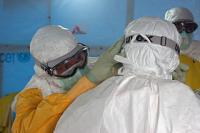
The United States has sufficient capacity for treating another outbreak of the Ebola virus, but financial, staffing and resource challenges remain a hurdle for many hospitals and health systems attempting to maintain dedicated treatment centers for highly infectious diseases, according to new study.
-
-
Plant virus to make Ebola detection more accurate
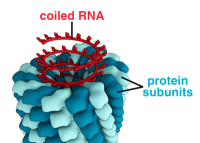
In the past, Ebola diagnostic tests, or assays, have been considered reliable only up to a point. The Ebola virus does not use DNA to store its genetic code. It uses a chemical cousin, called RNA, and extracted RNA degrades easily; one little mistake at the start of a test can ruin the whole thing. Novel process uses a plant virus and may ultimately make Ebola testing more accurate.
-
-
Rise of drug-resistant infections to cost millions of lives, trillions of dollars
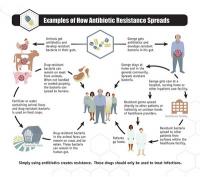
Drug-resistant infections could kill an extra ten million people across the world every year by 2050 if these infections are not tackled. By this date they could also cost the world around $100 trillion in lost output: more than the size of the current world economy, and roughly equivalent to the world losing the output of the U.K. economy every year, for thirty-five years.
-
-
Climate change poses multiple threats to global food system
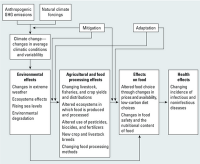
Climate change is likely to have far-reaching impacts on food security throughout the world, especially for the poor and those living in tropical regions, according to a new international report. The report warns that warmer temperatures and altered precipitation patterns can threaten food production, disrupt transportation systems, and degrade food safety, among other impacts. As a result, international progress in the past few decades toward improving food security will be difficult to maintain.
-
-
U.S. bioterrorism detection program unreliable: GAO
DHS’s BioWatch program aims to provide early indication of an aerosolized biological weapon attack. Until April 2014, DHS pursued a next-generation autonomous detection technology (Gen-3), which aimed to enable collection and analysis of air samples in less than six hours, unlike the current system (Gen-2), which requires manual intervention and can take up to thirty-six hours to detect the presence of biological pathogens. A GAO report found that DHS lacks reliable information about BioWatch Gen-2’s technical capabilities to detect a biological attack, and therefore lacks the basis for informed cost-benefit decisions about upgrades to the system.
-
-
Scientists create malaria-blocking mosquitoes
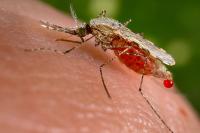
Using a groundbreaking gene editing technique, scientists have created a strain of mosquitoes capable of rapidly introducing malaria-blocking genes into a mosquito population through its progeny, ultimately eliminating the insects’ ability to transmit the disease to humans. The technique holds the promise of eradicating a disease that sickens millions annually.
-
-
Study finds that Ebola vaccine is safe, stimulating strong immune responses
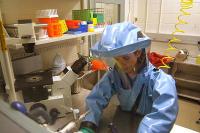
A clinical trial of a new Ebola vaccine that resulted from an unprecedented global consortium assembled at the behest of the World Health Organization (WHO) has found that it is well tolerated and stimulates strong immune responses in adults in Mali, West Africa and in the United States. If the vaccine is ultimately found to be safe and effective, it could offer crucial protection for contacts (family members, neighbors, etc.) of patients with confirmed Ebola disease in future epidemics, thereby helping to interrupt transmission. Larger trials of the vaccine sponsored, by GSK Biologicals, have already begun.
-
-
How infectious diseases become epidemics
Researchers are exploring how diseases spread across long distances in an effort to learn how better to control the next human, animal, or plant epidemic. The researchers will study data for vector-borne infectious diseases to model how these types of epidemics spread. Vector-borne diseases are spread by infectious microbes transmitted by ticks, mosquitos, or other insects or parasites.
-
-
Surface Enhanced Raman Scattering (SERS) technology for on-site detection
Surface Enhanced Raman Scattering (SERS) technology currently is applied using chemical analysis of materials, such as scanning at airports to identify what materials may be inside of glass vials. Researchers want to expand SERS for use in biological applications that could employ antibodies for purposes such as identifying viruses, water toxins, or pathogens in food samples. The researchers work on developing a small hand-held device that allows users to take a sample, put it in a glass vial and insert into the instrument for rapid identification.
-
-
Novel statistical model maps lethal route of Ebola outbreak
The traditional method to track disease spread is contract tracing, in which health workers interview patients and everyone they came into contact with. Contact tracing, however, is highly labor intensive. Using a novel statistical model, a research team mapped the spread of the 2014-15 Ebola outbreak in Sierra Leone, providing the most detailed picture to date on how and where the disease spread and identifying two critical opportunities to control the epidemic. The result matches with details known about the early phase of the Ebola outbreak, suggesting the real-time value of the new method to health authorities as they plan interventions to contain future outbreaks, and not just of Ebola.
-
More headlines
The long view
Ransomware Attacks: Death Threats, Endangered Patients and Millions of Dollars in Damages
A ransomware attack on Change Healthcare, a company that processes 15 billion health care transactions annually and deals with 1 in 3 patient records in the United States, is continuing to cause massive disruptions nearly three weeks later. The incident, which started on February 21, has been called the “most significant cyberattack on the U.S. health care system” by the American Hospital Association. It is just the latest example of an increasing trend.
